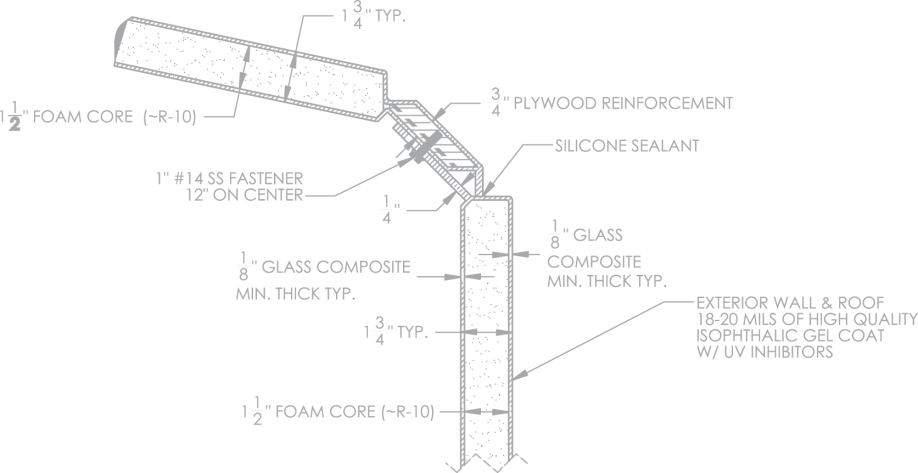Opening the Environmental Benefits of Recycled Compounds in Building And Construction and Layout
In the realm of construction and style, the utilization of recycled composites holds substantial promise for boosting sustainability practices and lowering environmental influence. The change in the direction of an extra sustainable future in these sectors pivots on opening the full possibility of recycled compounds.

Environmental Impact Reduction
The decrease of ecological effect via the usage of recycled composites in building and design plays a critical duty in lasting techniques. By including recycled composites into structure materials, the construction market can considerably decrease its carbon footprint and add to a more eco-friendly future. These sustainable materials, made from repurposed plastics, timber fibers, or various other recycled elements, use a viable alternative to standard construction materials without endangering on quality or sturdiness.
Recycled compounds assist draw away waste from garbage dumps and reduce the need for drawing out basic materials, therefore saving all-natural resources. In addition, the production process of these compounds frequently consumes less energy and discharges fewer greenhouse gases compared to creating virgin products (composites). This shift towards making use of recycled compounds not just decreases ecological harm however also advertises a circular economic climate by urging the reuse of products that would certainly otherwise be thrown out
Waste Reduction
With a concentrate on lessening waste in building and construction and design, the combination of recycled composites offers a lasting service to minimize ecological influence. Waste minimization is an important facet of lasting techniques, and making use of recycled composites provides a chance to accomplish this objective properly. By using materials that have actually currently offered their initial objective, such as recycled plastics or recovered wood fibers, the construction and style industries can substantially decrease the quantity of waste generated and sent out to garbage dumps.
Recycled compounds have the potential to draw away significant quantities of waste from conventional disposal techniques, adding to a much more round economic climate where sources are utilized successfully. Furthermore, the manufacturing process of recycled composites often eats much less energy and produces fewer discharges contrasted to virgin products, additionally lowering the ecological impact of building and style tasks.
Executing waste minimization techniques with the unification of recycled composites not only assists in saving natural resources yet additionally advertises a more sustainable approach to building and making for a greener future.
Power Preservation
Including recycled composites not only minimizes waste in building and layout but also plays a crucial role in enhancing power conservation methods within the sector. Making use of recycled compounds in building and construction can significantly contribute to power preservation via numerous means. The production of virgin materials typically needs substantial power inputs, whereas using recycled compounds takes in less energy, thus minimizing total power intake. In addition, including recycled composites can contribute to better insulation residential or commercial properties in structures, minimizing the demand for excessive home heating or cooling, and as a result decreasing energy use for climate control. The lightweight nature of many recycled compounds can lead to lighter frameworks, requiring less energy for transportation and setup. By advertising using recycled compounds in construction and layout, the market can make considerable strides towards attaining energy effectiveness and reducing its carbon footprint, inevitably adding to a much more sustainable built environment.
Carbon Footprint Decrease
Enhancing sustainability methods via the use of recycled composites in building and layout dramatically decreases the carbon footprint of the sector. By incorporating recycled products right into the manufacturing of compounds, the check out this site requirement for virgin sources decreases, leading to lower power consumption and greenhouse gas exhausts associated with traditional manufacturing processes. This decrease in carbon footprint is critical in combating climate modification and promoting a much more environmentally pleasant technique to building and layout.
Additionally, using recycled compounds likewise helps in diverting waste from garbage dumps, therefore mitigating the environmental impact of disposal and advertising a circular economic climate. The carbon impact reduction attained through the adoption of recycled composites straightens with the global press in the direction of lasting practices and the decrease of commercial exhausts. It showcases a dedication to accountable source management and a change in the direction of greener options in the construction and layout fields. Inevitably, by focusing on the integration of recycled composites, the industry can make substantial strides in lowering its carbon footprint and adding to a much more sustainable future.
Sustainable Future
The integration of recycled composites in building and construction and style not just addresses prompt environmental concerns but additionally lays a strong foundation for a sustainable future in the market. By incorporating recycled compounds into building materials and products, the building and style markets can considerably minimize their reliance on virgin resources, bring about a more circular economic climate. This change in the direction of sustainability is crucial for alleviating the ecological effect of conventional construction techniques, which commonly cause high degrees of waste generation and source exhaustion.

Conclusion
To conclude, recycled compounds provide considerable ecological benefits in construction and layout by reducing ecological influence, minimizing waste, preserving power, lowering carbon footprint, and promoting a lasting future. Embracing making use of recycled compounds can add to an extra environmentally-friendly technique to structure and design, eventually bring about an extra lasting and greener future for all.
The decrease of environmental influence through the usage of recycled composites in construction and layout plays an essential function in sustainable practices.With an emphasis on reducing waste in construction and design, the combination of recycled composites uses a lasting option to lower environmental effect. By advertising the use of recycled composites in building and layout, the market can make substantial strides This Site towards attaining energy effectiveness and reducing its carbon impact, inevitably adding to an extra sustainable constructed environment.
